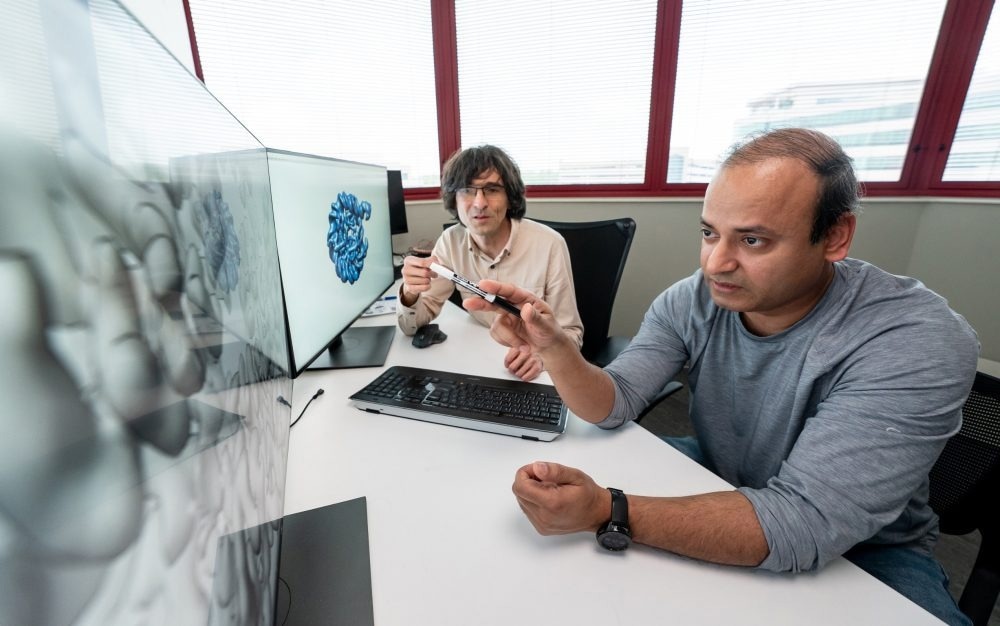DNA is wrapped around histones and bundled into structures called nucleosomes, much like thread tightly wrapped around a spool. St. Jude Children’s Research Hospital researchers are investigating how a type of transcription factor known as a pioneer transcription factor reaches DNA even when tightly wrapped.
 Research led by Charles W. M. Roberts, MD, PhD, Executive Vice President and St. Jude Comprehensive Cancer director found a new role for the SWI/SNF chromatin remodeling complex. Image Credit: St. Jude Children’s Research Hospital
Research led by Charles W. M. Roberts, MD, PhD, Executive Vice President and St. Jude Comprehensive Cancer director found a new role for the SWI/SNF chromatin remodeling complex. Image Credit: St. Jude Children’s Research Hospital
Their findings show how the epigenetic environment affects transcription factor binding. Since transcriptional issues have been linked to different malignancies, a better knowledge of the process may assist in the development of future therapies. Nature reported the findings on May 24th, 2023.
Transcription factors that control gene expression can be physically prevented from reaching their binding sites by the packing of DNA into nucleosomes.
To control transcription, DNA access must be restricted. Pioneer transcription factors, however, are known to facilitate the binding of other transcription factors and can attach to their target DNA even when chromatin is compressed.
The so-called Yamanaka factors, including Oct4, are transcription factors utilized to promote pluripotency (the capacity to give birth to many cell types). It is unknown how early transcription factors reach DNA that is tightly wrapped.
The interaction between Oct4 and nucleosomes was studied by St. Jude researchers using cryo-electron microscopy (cryo-EM) and biochemistry.
Building on prior work to understand the dynamic behavior of nucleosomes, we wanted to understand how other factors might utilize those dynamic changes to access chromatin. Oct4 did not bind where we anticipated it might—rather than binding inside the nucleosome, we found that it bound a little bit outside.”
Mario Halic, Ph.D., Study Corresponding Author and Associate Member, St. Jude Children’s Research Hospital
He added, “One of the main findings is that epigenetic modifications can affect transcription factor binding and cooperativity. The existing epigenetic state of chromatin can determine how transcription factors will cooperatively bind to chromatin.”
The Epigenetic Impact
Results indicate that the first binding of the Oct4 molecule “fixes” the nucleosome in a position that enhances the exposure of other binding sites, facilitating the binding of subsequent transcription factors and providing an explanation for transcription factor cooperativity.
Additionally, they discovered that Oct4 interacts with histones, and that this activity encourages chromatin opening and affects cooperativity.
Their study also demonstrated how Oct4’s location of DNA is impacted by changes to histone H3K27. These findings clarify how Oct4 activity can be controlled by the epigenetic environment to maintain appropriate cell programming.
Notably, the researchers assembled their nucleosomes using endogenous human DNA sequences as opposed to synthetic sequences. Despite it being more difficult to deal with, this allowed them to investigate the nucleosome’s dynamic nature.
In this work, we used real genomic DNA sequences to study transcription factors in the context of where they function. This strategy allowed us to discover that the first binding event of Oct4 positions the nucleosomal DNA in a manner that allows cooperative binding of additional Oct4 molecules to internal sites.”
Kalyan Sinha, Ph.D., Study First Author, Department of Structural Biology, St. Jude Children’s Research Hospital
Sinha added, “In addition, we observed exciting interactions with histone tails and have seen that histone modifications can alter those interactions. Together, these findings provide new insights into the pioneering activity of Oct4. Histone modifications affect how DNA is positioned and how transcription factors can bind cooperatively, which means in cells, if you have the same DNA sequence, different epigenetic modifications can result in different, combinatorial effects on transcription factor binding.”
Source:
Journal reference:
Sinha, K. K., et al. (2023). Histone modifications regulate pioneer transcription factor cooperativity. Nature. doi.org/10.1038/s41586-023-06112-6